[ad_1]
Squamous cell carcinoma is a type of locally aggressive (malignant) cancer that grows and spreads rapidly in the neighboring tissues, including at the bone level.
This type of cancer often occurs as a result of sun exposure, especially in cats with light-colored fur. Cats typically present at the vet clinic with skin ulcers, especially around the ears, eyes, and nose. If surgery is performed in time, the chances of survival increase.
In this article, you will learn what squamous cell carcinoma is, the causes of its occurrence, the clinical signs, and what you can do if your cat has squamous cell carcinoma.

What Is Squamous Cell Carcinoma?
Squamous cell carcinoma is a malignant cancer, meaning it can spread throughout the affected tissues and can spread to other areas. It is an aggressive local cancer, which grows quickly and invades the neighboring tissues, including the bone.
The most commonly affected cats are those between 7 and 15 years old that have been exposed to the sun for a long time (outdoor or outdoor-indoor cats, especially those with light-colored fur). Squamous cell carcinoma commonly appears in non-pigmented areas exposed to the sun. White cats are 13 times more prone to this type of carcinoma compared to colored cats.1
This type of cancer is located in different areas of the head, such as:
- Ear flaps (external pinna)
- Eyelids
- Skin of the nose
- Inside the mouth (on the lips, under the tongue, mandible, tonsils, gums, etc.)
The diagnosis can easily be confused with benign ulcers, gingivitis, or other dental diseases, especially when accompanied by poor dental health.
If your cat has skin ulcers or bloody lesions, take them to the vet for a correct diagnosis and appropriate treatment. Tumors located on the nose or ears can be noticed more easily by the owner, which leads to earlier detection and more effective treatment.
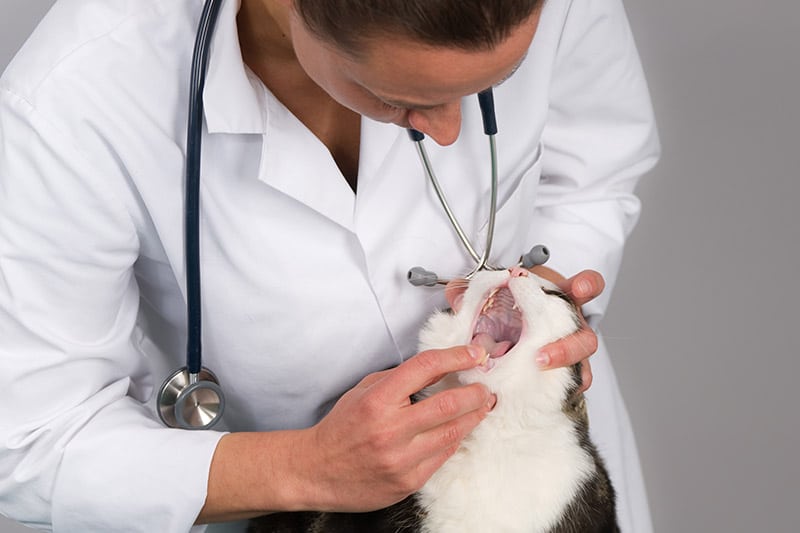
What Are the Signs of Squamous Cell Carcinoma in Cats?
The most common area where squamous cell carcinomas occur is the face, especially the ears. Other high-risk areas are those with maximum sun exposure.
Clinical signs of squamous cell carcinoma include:
- Irritation of the area
- Weeping sores
- Crusts
- Ulceration
- Local bleeding
Signs of oral carcinoma may include:
- Loss of appetite
- Weight loss
- Swallowing with difficulty
- Bad breath
- Excessive salivation (sometimes with blood)
In some cases, squamous cell carcinoma may appear as a raised, red area or cauliflower shape. It also has two stages:
- Initial stage: Red-pink nodular lesions appear. They are firm in consistency, with raised edges. The carcinoma looks like a firm skin nodule.
- Advanced stage: The tumor has a variable, irregular diameter and is ulcerated. The advanced phase is often associated with regional adenopathy (enlarged local lymph nodes).
Squamous cell carcinomas usually present as a solitary lesion (i.e., it occurs in a single area). However, there is a type of squamous cell carcinoma that is known as Bowenoid carcinoma or Bowen’s disease.2 This carcinoma is a multicentric squamous cell carcinoma and occurs in several areas of the body, but is not technically a metastatic cancer.
When affecting the ears, squamous cell carcinoma usually presents with dark, crusting lesions on the tips of the ears, which may bleed or cause irritation.
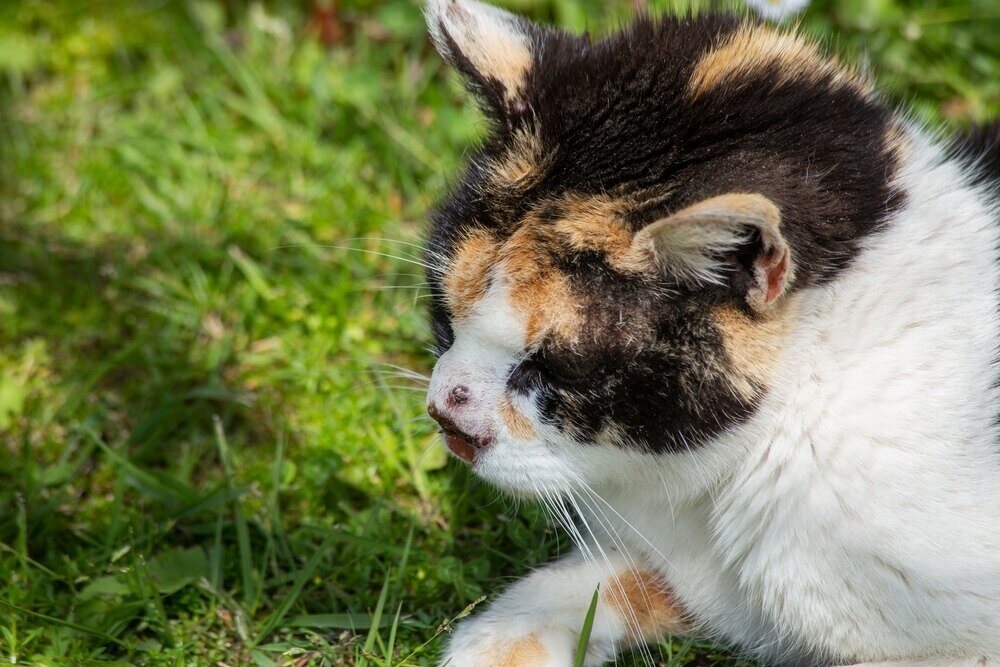
What Causes Squamous Cell Carcinoma in Cats?
Any type of tumor or cancer is the result of uncontrolled multiplication of cells. What causes this loss of control does vary and usually several changes have to happen to cells before they will result in the growth of a tumor. In most cases, the cause of squamous cell carcinoma in cats is the prolonged exposure of unprotected skin areas (unpigmented, hairless areas) to UV rays. The UV rays cause damage to the skin cells. Cats between the ages of 7 and 15 are most commonly affected by this type of cancer.
In the case of oral localization, squamous cell carcinoma represents approximately 80% of oral tumors reported in cats, affecting cats 12–13 years old. Compared to the cutaneous form, oral squamous cell carcinoma is more aggressive and malignant.
How Is Squamous Cell Carcinoma Diagnosed in Cats?
A thorough general examination will highlight the presence of skin lesions. If the vet suspects squamous cell carcinoma, they will recommend a cytological examination. Your cat will be put under local or general anesthesia, and tumoral cells will be collected through fine needle aspiration. However, for a definitive diagnosis, a biopsy may also be recommended. This means the vet will remove a piece of the tumor or excise it completely and send it to the lab for diagnosis.
Additional tests can also be recommended, such as blood tests (to assess the general state of health) and chest X-rays (to see if the tumor has spread to the lungs—i.e., if it has metastasized). Fortunately, metastasis is rare, but it can spread to the lungs, liver and kidneys. In addition, the vet can also recommend a CT scan to determine the extent of the disease, especially in cases where the cancer occurs in the mouth.
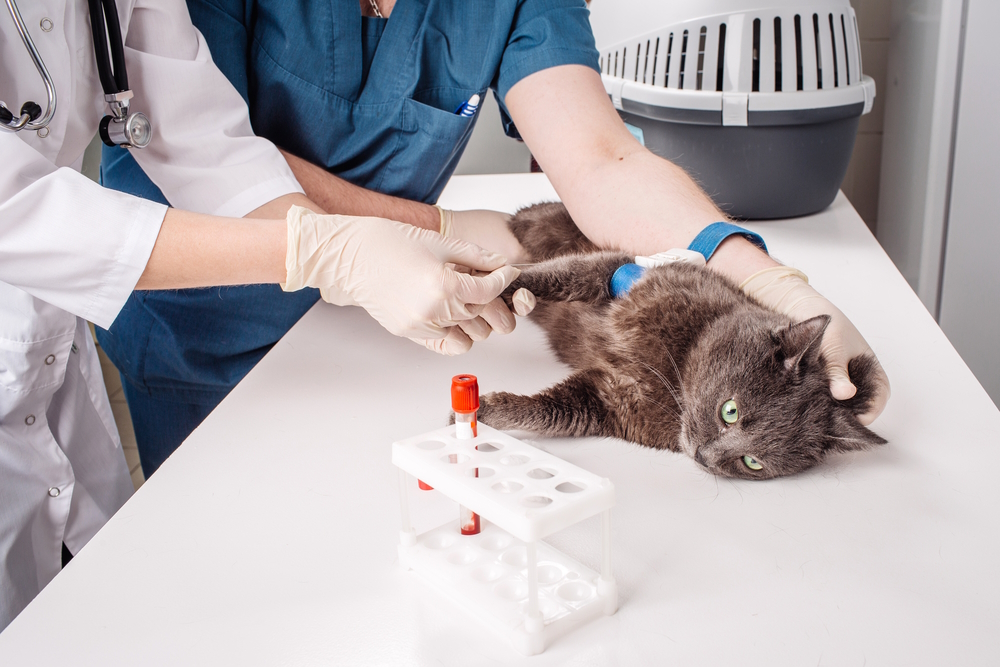
What Are the Treatment Options for Squamous Cell Carcinoma in Cats?
Depending on the severity of the tumor and how much it has spread to the surrounding tissues, the treatment options for squamous cell carcinoma can be the following.
- Surgical intervention: In general, it is recommended that the excision of the tumor be done completely and widely because the recurrence rate for incomplete tumor resections is frequent. In the case of oral carcinoma, this is often extremely challenging due to the location of the tumor, and the fact that it has usually grown significantly by the time it is detected. Treatment for oral carcinoma may involve multiple modalities, but even so, the prognosis is often poor.
- Radiation therapy: In cases where the tumor is incompletely removed, radiotherapy can help delay or prevent relapse. If the tumor has not been surgically removed, radiation therapy can help slow tumor growth.
- Cryotherapy: Freezing the tumor or tumor margins can be a useful technique for masses that are difficult to access, particularly oral carcinoma.
- Chemotherapy: This type of therapy has minimal or no benefits in treating squamous cell cancer in cats because this type of cancer is considered resistant to traditional chemotherapy. However, there has been some success with injecting chemotherapeutic drugs directly into the tumor itself.
- Tyrosine-kinase inhibitors (toceranib phosphate, e.g., Palladia): This type of drug controls cellular functions like replication, growth, differentiation, etc. Studies have shown that cats with squamous cell carcinoma have a longer average survival time (123 days compared to 45 days in cats that have not been treated with toceranib).
- Other medications: Certain medications, such as COX inhibitors (non-steroidal anti-inflammatories) or buprenorphine (synthetic opioid), can increase your cat’s comfort through the analgesic effect that they have. Oral antibiotics can also be prescribed if your cat has secondary infections.
How Do I Care for a Cat With Squamous Cell Carcinoma?
If your vet recommends surgical excision of your cat’s squamous cell carcinoma, time is of the essence. The earlier the mass is removed, the higher the chance of success. Once the tumor grows into deeper tissues, particularly if it affects the bone, prognosis is much less favorable.
If your cat has been diagnosed with oral squamous cell carcinoma, surgery may not be recommended, depending on the size and location of the mass. You may be referred to a veterinary oncologist to discuss the options. Even if you opt for palliative (end of life) treatment, which is very reasonable with this form of the cancer, it is always good to know your options.
The most important factor in caring for a cat with inoperable squamous cell carcinoma is monitoring their quality of life. Anti-inflammatories and antibiotics will help to keep them comfortable, but eventually, eating and swallowing will become difficult, and you will need to make a decision about euthanasia.
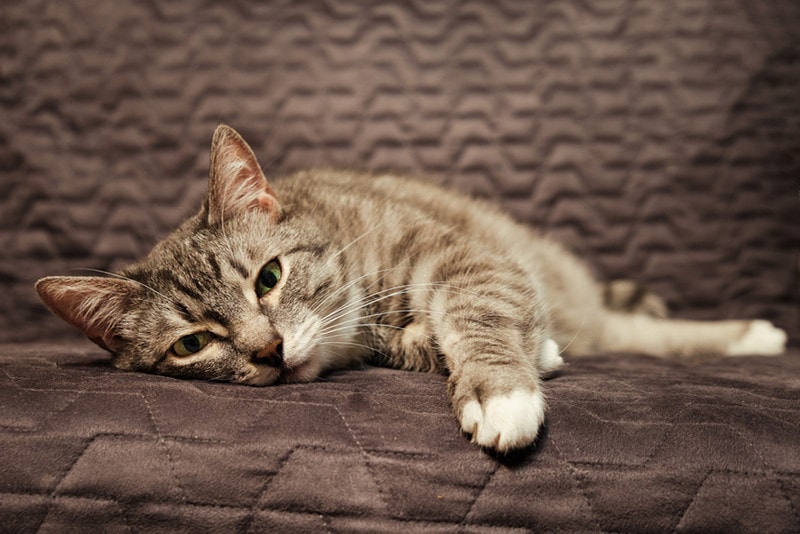

Frequently Asked Questions (FAQ)
What Triggers Cancer in Cats?
Several factors can trigger cancer in cats, including UV rays, chemicals, diet, etc. However, in most cases, the causes underlying the onset of cancer in pets are not known. To help reduce the risks of cancer and a range of other diseases, it is recommended to sterilize your cat, feed them a balanced diet, take them to periodic check-ups, and not expose them to chemicals like tobacco smoke. If you have a white cat, or one with white areas on their head, the best thing to do is protect them from the sun. Consider keeping them indoors, and treating windows with a UV-blocking film to reduce exposure to sun-loving cats.
How Do You Feed a Cat With Squamous Cell Carcinoma?
If your cat has been diagnosed with squamous cell carcinoma or any other type of cancer, it is best to feed them a diet that is low in carbs because they fuel the cancer cells. Your cat’s diet should be discussed with your veterinarian.
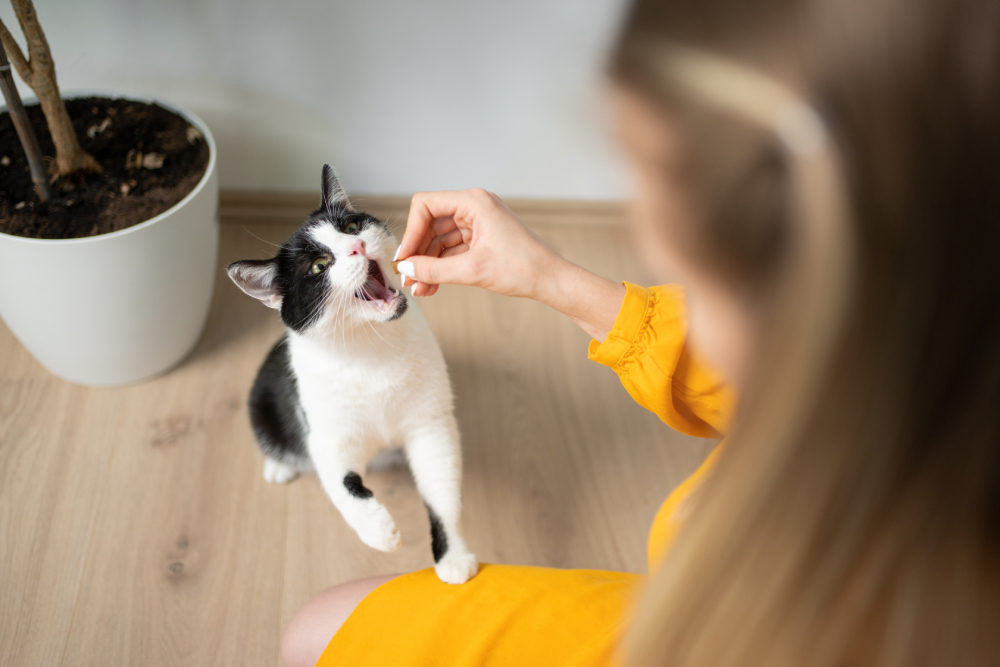

Conclusion
Squamous cell carcinoma is an aggressive cancer that can spread quickly to the surrounding tissues. This form of cancer mainly affects the tips of the ears but also the lips, tongue, eyelids, gums, etc. The development of this type of cancer is usually triggered by sun exposure, with white and short-haired cats being especially affected. The typical age of appearance of squamous cell carcinoma is 7–15 years.
Initially, the disease can be overlooked because the skin lesions are superficial. After advancing, though, squamous cell carcinoma produces local bleeding, permanent crusting, necrosis, and secondary infections. If you notice any new lesions on your cat’s skin that aren’t going away after a week or two, take them to see your. If the tumor is able to be completely removed, the prognosis is usually quite good. However, in tumors that have invaded deeper tissues, or in the case of oral squamous cell carcinoma, the prognosis is generally poor, with cats surviving 2–5 months, on average, after diagnosis.
Featured Image Credit: bmf-foto.de, Shutterstock


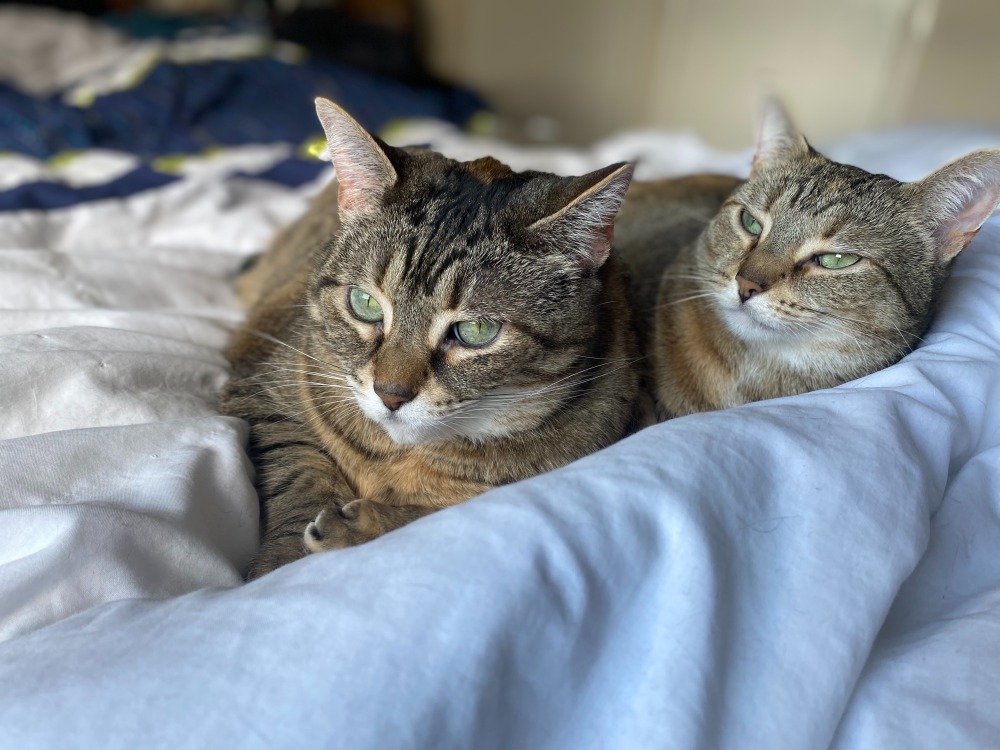
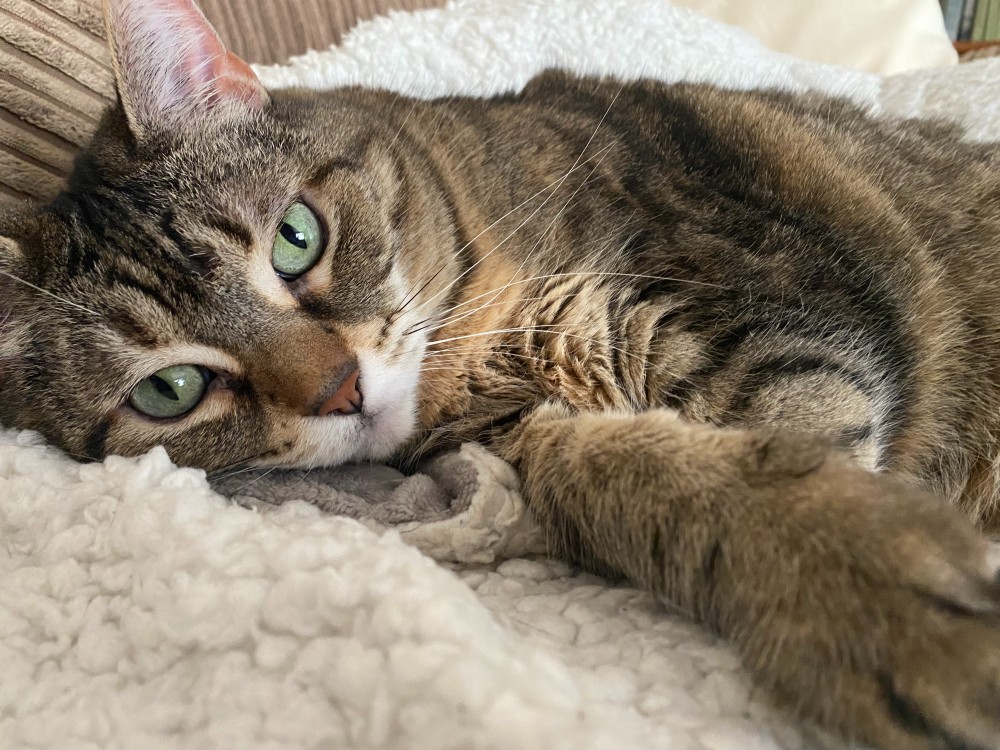
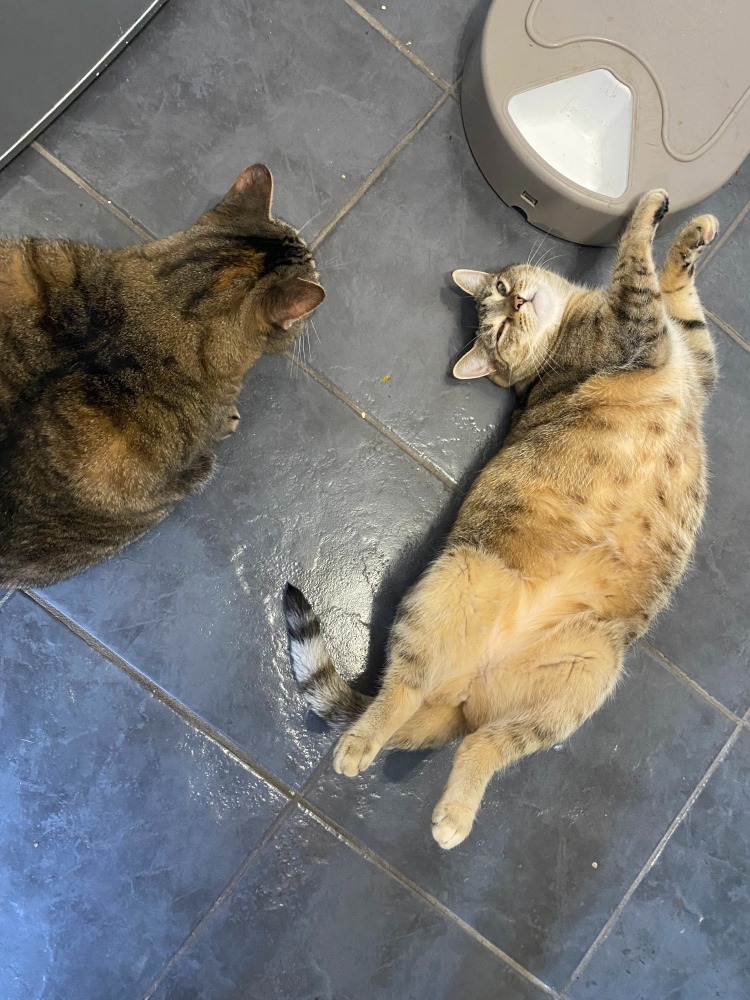

 Buddy the catBarry
Buddy the catBarry The cat had somehow snuck into a UPS truckBarry
The cat had somehow snuck into a UPS truckBarry Barry
Barry The cat jumped into the cargo area when Barry removed the service panelBarry
The cat jumped into the cargo area when Barry removed the service panelBarry He was happy to be out of the place he was trapped inBarry
He was happy to be out of the place he was trapped inBarry The cat was wet and dirty from road grimeBarry
The cat was wet and dirty from road grimeBarry Buddy kept Barry company while sitting on a big boxBarry
Buddy kept Barry company while sitting on a big boxBarry He is now being cared for by Friends Forever Humane SocietyBarry
He is now being cared for by Friends Forever Humane SocietyBarry
 Clementine the cat and Persimmon the kittenAngela
Clementine the cat and Persimmon the kittenAngela Angela
Angela Angela
Angela Angela
Angela Persimmon was born unexpectedly four days after the first birthAngela
Persimmon was born unexpectedly four days after the first birthAngela Angela
Angela Clementine showers her only kitten with unconditional loveAngela
Clementine showers her only kitten with unconditional loveAngela She watches over him every step of the wayAngela
She watches over him every step of the wayAngela Persimmon is a little miracle babyAngela
Persimmon is a little miracle babyAngela Angela
Angela Angela
Angela
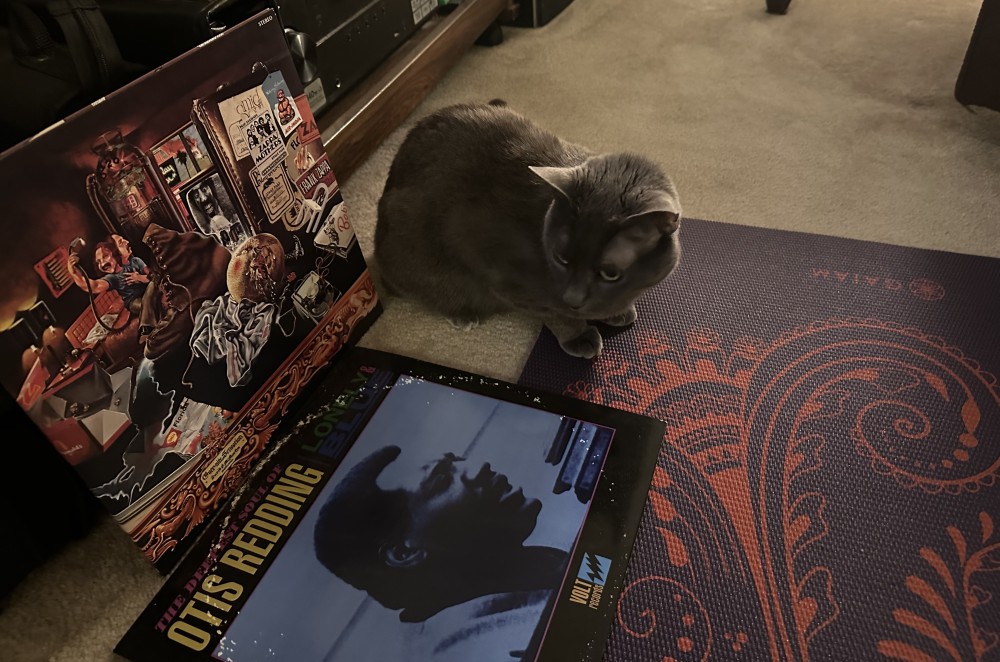
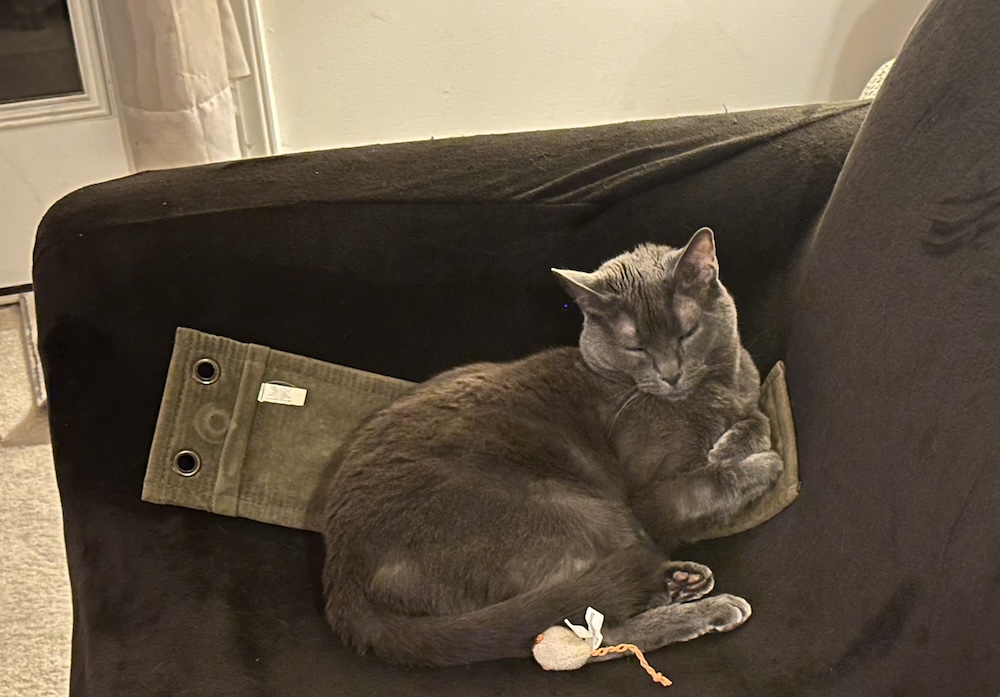

 HeroPuppyKittyNYCITY
HeroPuppyKittyNYCITY PuppyKittyNYCITY
PuppyKittyNYCITY PuppyKittyNYCITY
PuppyKittyNYCITY PuppyKittyNYCITY
PuppyKittyNYCITY Hero is a lap catPuppyKittyNYCITY
Hero is a lap catPuppyKittyNYCITY PuppyKittyNYCITY
PuppyKittyNYCITY He came out of his shell and started to playPuppyKittyNYCITY
He came out of his shell and started to playPuppyKittyNYCITY He enjoyed cuddle time with his foster momPuppyKittyNYCITY
He enjoyed cuddle time with his foster momPuppyKittyNYCITY PuppyKittyNYCITY
PuppyKittyNYCITY Hero cuddling with his forever momPuppyKittyNYCITY
Hero cuddling with his forever momPuppyKittyNYCITY
 ClydeSt Francis Society Animal Rescue
ClydeSt Francis Society Animal Rescue Clyde had to compete with raccoons for foodSandra
Clyde had to compete with raccoons for foodSandra He was finally safe after being outside for yearsSandra
He was finally safe after being outside for yearsSandra His fur is cleaner, brighter, and softerSandra
His fur is cleaner, brighter, and softerSandra He’s become a supervisor in the houseColleen
He’s become a supervisor in the houseColleen He likes to inspect every nook and cranny even atop the fridgeColleen
He likes to inspect every nook and cranny even atop the fridgeColleen Colleen
Colleen Sandra
Sandra Clyde offers his « help » in the kitchenSandra
Clyde offers his « help » in the kitchenSandra Happy and lovedColleen
Happy and lovedColleen
 Marcos the dad and Morgan the sonMorgan
Marcos the dad and Morgan the sonMorgan They were found outside in a neighborhood, and no one came to claim themLittleWanderersNYC
They were found outside in a neighborhood, and no one came to claim themLittleWanderersNYC LittleWanderersNYC
LittleWanderersNYC LittleWanderersNYC
LittleWanderersNYC LittleWanderersNYC
LittleWanderersNYC They love cuddling with each other in bedMorgan
They love cuddling with each other in bedMorgan Marcos is very friendly and trustingMorgan
Marcos is very friendly and trustingMorgan Morgan learns to be brave by watching his dadMorgan
Morgan learns to be brave by watching his dadMorgan They enjoy their naps in the soft bed by the heaterMorgan
They enjoy their naps in the soft bed by the heaterMorgan Morgan
Morgan
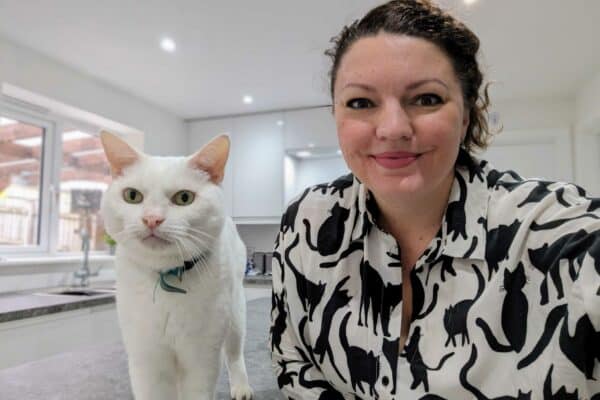
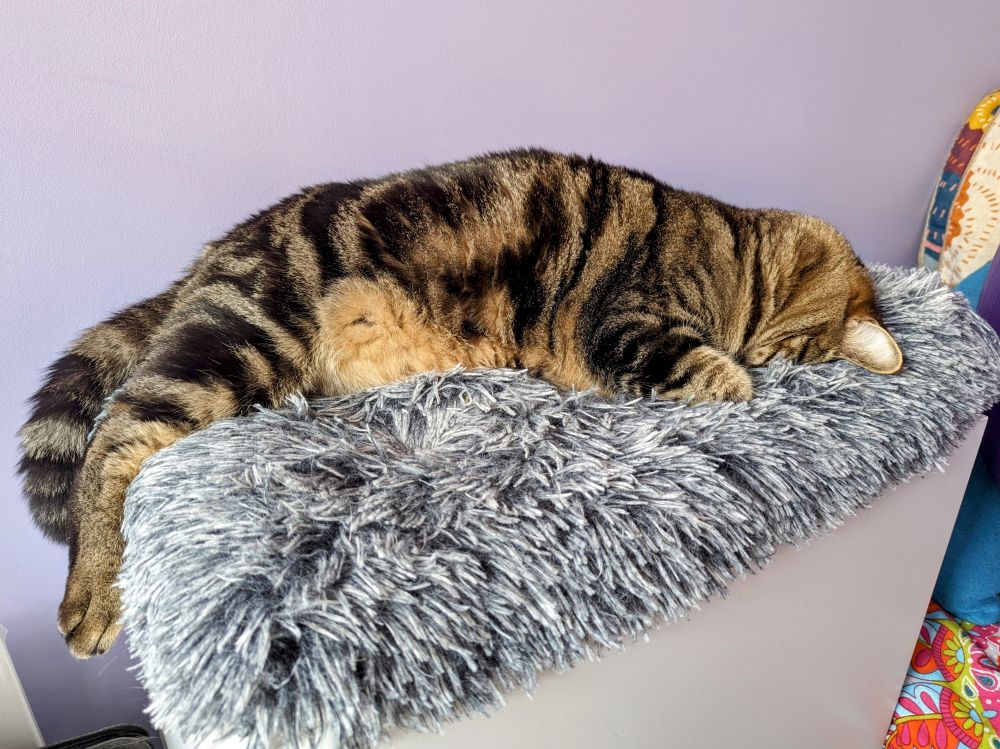
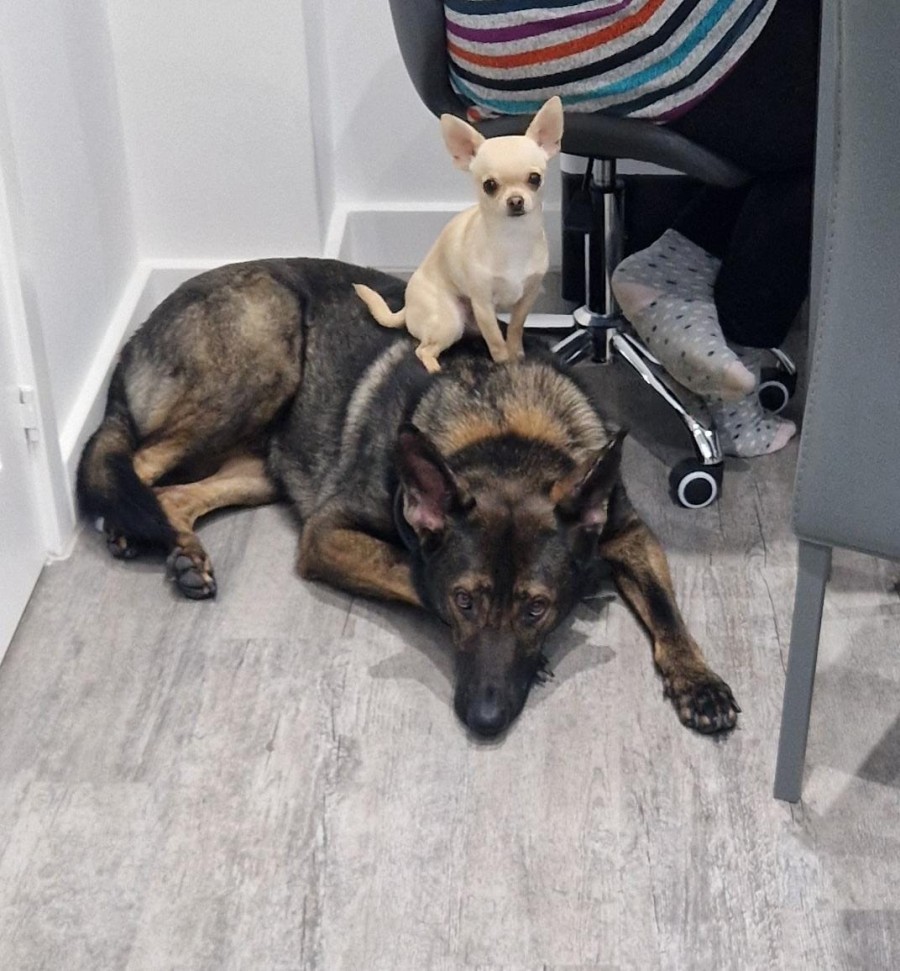

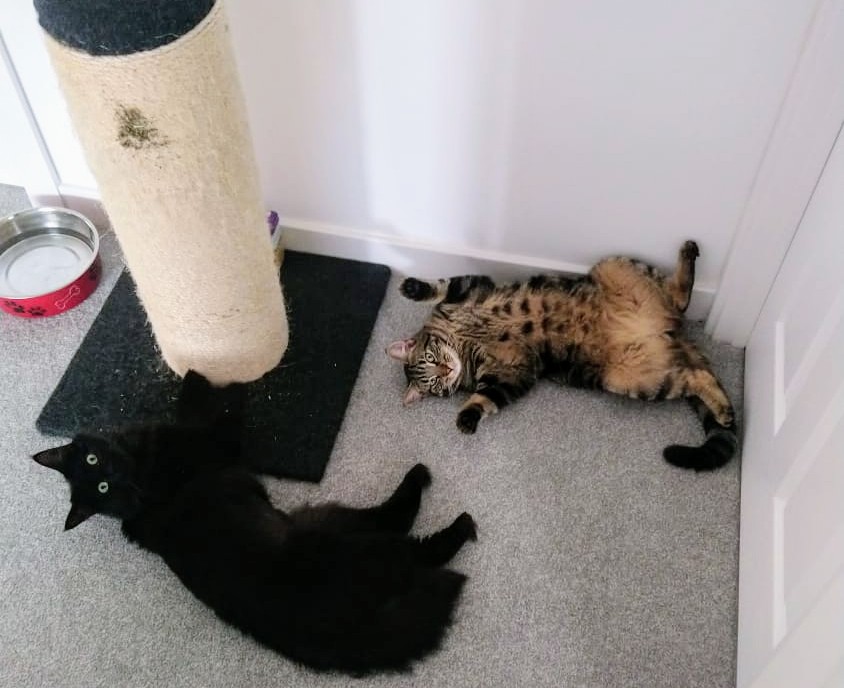
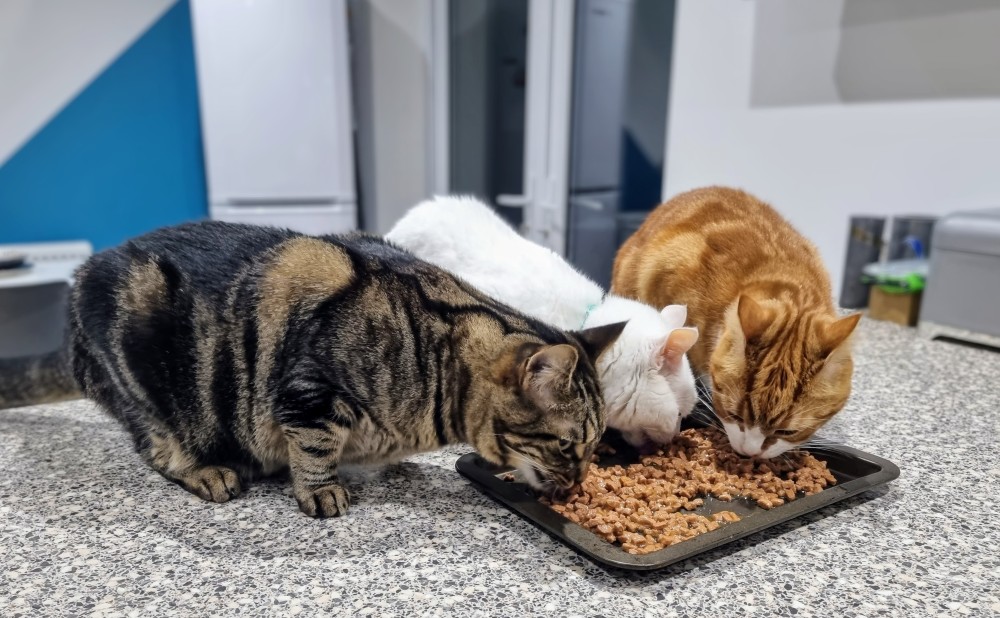


 VictorExploitsValleySPCA
VictorExploitsValleySPCA They were spotted outside in the snowExploitsValleySPCA
They were spotted outside in the snowExploitsValleySPCA He was very nervous when he arrived at the shelterExploitsValleySPCA
He was very nervous when he arrived at the shelterExploitsValleySPCA ExploitsValleySPCA
ExploitsValleySPCA ExploitsValleySPCA
ExploitsValleySPCA ExploitsValleySPCA
ExploitsValleySPCA Victor has made quite a transformationExploitsValleySPCA
Victor has made quite a transformationExploitsValleySPCA Rescuers never stopped looking for Victor’s best friendExploitsValleySPCA
Rescuers never stopped looking for Victor’s best friendExploitsValleySPCA After 28 days, they found the gray cat lovingly named HugoExploitsValleySPCA
After 28 days, they found the gray cat lovingly named HugoExploitsValleySPCA ExploitsValleySPCA
ExploitsValleySPCA